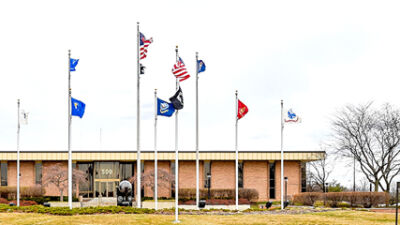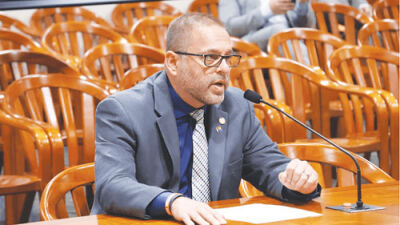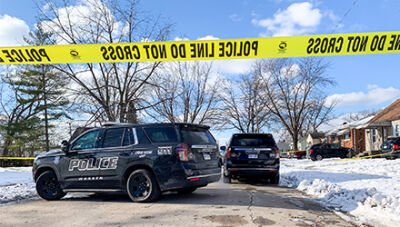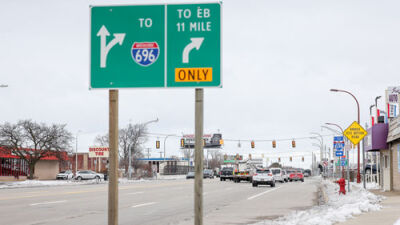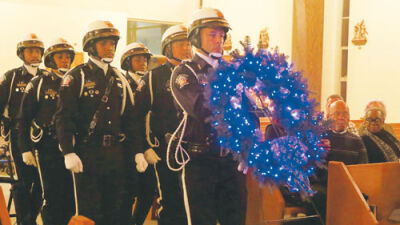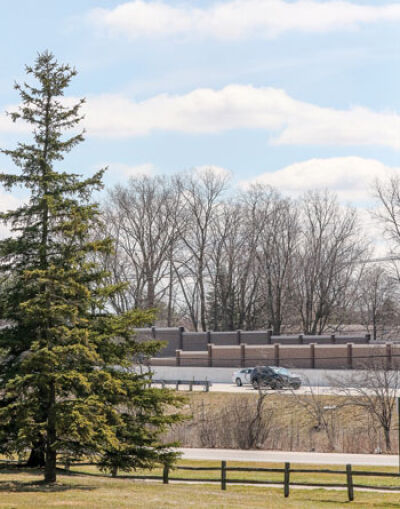
Funding for two new sound walls along I-75 in Troy were approved in the next state budget.
File photo by Patricia O’Blenes
TROY — After more than three years of effort, new sound walls will be coming to two areas along Interstate-75 in Troy to combat noise from traffic.
The noise increased after the completion of the I-75 revitalization project wrapped on that portion of the expressway three years ago. Troy residents living nearby immediately noted unreasonable levels of noise, largely caused by a new material used on the roadway and sound walls on the opposite side of I-75 bouncing the sound back.
A sound study was conducted earlier this year by the Michigan Department of Transportation. Two portions of the affected homes were found to meet the criteria for additional sound mitigation, but it required an additional $10 million in funds that had not been allocated. The recently completed 2024 fiscal year Michigan state budget has included this $10 million for the project.
“About two weeks ago, we were able to get a Zoom meeting with the chief of staff, Jenita Moore, for the chairman of the Appropriations Committee, Sarah Anthony,” said Loraine Scussel, one of the Troy residents who has been leading the efforts for additional sound mitigation. “We explained the reasons we were asking for the $10 million, and she was very attentive. We had no idea it would be approved. We were cautiously optimistic, but it is kind of unprecedented that this happens.”
Troy Mayor Ethan Baker said this was a well-earned win for Troy.
“We are grateful for the bipartisan coordination of Rep. Sharon MacDonnell and Sen. Mike Webber to ensure this line item was included in the final conference reports; they both listened to our residents, worked with our local city elected officials and management, and got the job done,” he said in an email. “This is a prime example of what working together for the good of our community looks like — our diligent residents, a mayor and City Council that pushed hard at every opportunity, and the leadership by Rep. MacDonnell and Sen. Webber in Lansing all ultimately provided a win for our city. The work now continues to address the remaining areas of our City that are still in need of I-75 noise mitigation, but today we celebrate this important victory.”
Both MacDonell and Webber said this will be a great quality of life improvement for many Troy residents.
“I hope it really does improve their lives and helps with the noise that has really gotten out of control since the I-75 modernization project. I have talked to the offices of some U.S. congresswomen for their help on the other soundwall portions that people are asking for,” said MacDonell. “This proves that citizens can really influence policy when they work hard on an issue. I want to congratulate them.”
“I am happy to have been able to negotiate this important infrastructure need for the residents of Troy, who have experienced the frustration of increased noise pollution since vegetation was reduced and the interstate was expanded through their community in 2015,” added Webber. “Neighbors from across 20 subdivisions worked with local and state leaders for years to voice their concerns, and I am glad to report that progress has been made on their advocacy efforts. MDOT will now have the $14 million necessary to complete the portions of the sound wall identified by its most recent study.”
Approximately $4 million had already been approved for the project when the sound study was performed. Now the remaining money will fund the two walls.
“The first part will be constructed north of Wattles to Long Lake, on the east side of I-75, across from White Chapel Cemetery, and will be approximately half a mile,” explained Scussel. “The second part will be built from around Crooks to Cooligdge on the north side of I-75, near Firefighters Park.”
MDOT has confirmed that the two walls are in the planning stages, but it is too early for specifics, such as a timetable for when work will begin.
“It was the intent of the Legislature to have MDOT use the $10 million earmark to construct the two additional sound walls that were identified in the most recent study as qualifying,” MDOT spokesperson Rob Morosi said in an email. “As far as project scheduling questions, it’s too early to say.”
There are additional areas that Troy residents said also need sound mitigation as a result of the I-75 project. These areas did not meet the MDOT criteria for sound walls, mostly due to population density. Many Troy residents, including Scussel, hope funds for these additional efforts will come in future budgets.
“There are four other segments that are noisy enough to be considered feasible by MDOT for sound mitigation, but the population density wasn’t high enough by their standards,” Scussel said. “We need to pursue either federal funds or push for the guidelines for the standards to be changed. We might also find additional funding in the state of Michigan in future budgets or via alternative means. We are exploring what our options are going forward.”
Scussel said this was a group effort and that she hopes it will remain one as the project moves forward.
“This has been an amazing experience. When we started this grassroots citizens group three years ago, I had no idea it would work out so well. We met with our city officials many times,” she said. “We partnered with MDOT for the sound study. They were very supportive. We still hope to partner with them going forward. We hope to be involved in the design of the sound walls. We provided them with information so when the engineering study is being looked at, we don’t want to step away. We hope they will allow us to be involved to a point.”
 Publication select ▼
Publication select ▼


